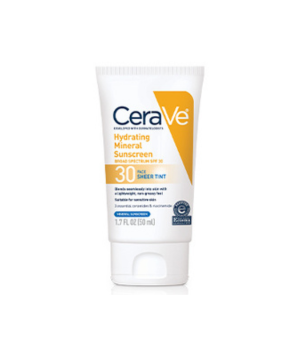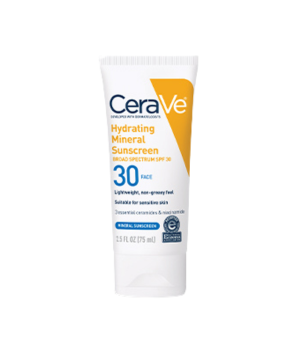Titanium Dioxide
TYPE OF INGREDIENT
Mineral
COMMONLY FOUND IN
Sunscreens, makeup products (e.g., foundation, powder), skincare products for sensitive skin
WHAT ARE THE BENEFITS OF TITANIUM DIOXIDE?
Titanium dioxide is a mineral ingredient widely known for its ability to provide broad-spectrum protection against both UVA and UVB rays, making it a popular choice for inclusion in sunscreens. As a physical sunscreen agent, it forms a protective barrier on the skin’s surface, reflecting and scattering harmful UV radiation away from the skin. This helps to prevent sunburn, premature aging and the development of skin cancer.
In addition to its sun-protective properties, titanium dioxide is valued for its gentle nature, making it suitable for sensitive or easily irritated skin. It is often used in skincare formulations designed for individuals prone to allergies or skin sensitivities, providing a safe and effective option for sun protection without causing irritation.
Moreover, titanium dioxide has a brightening effect on the skin, helping to even out skin tone and reduce the appearance of discoloration or hyperpigmentation. This makes it a common ingredient in makeup products, such as foundations and powders.
WHAT IS TITANIUM DIOXIDE?
Titanium dioxide is a naturally occurring mineral compound that is derived from titanium, a widely abundant element found in rocks, soil and minerals. It is produced by processing titanium ore into a fine white powder, which is then incorporated into various skincare, cosmetic and industrial products.
In skincare formulations, titanium dioxide is prized for its versatility and safety profile. It is non-comedogenic, meaning it does not clog pores or exacerbate acne, making it suitable for individuals with oily or acne-prone skin. Additionally, titanium dioxide is non-irritating and hypoallergenic, making it well-tolerated by most skin types, including sensitive skin.
IS TITANIUM DIOXIDE SAFE FOR ALL SKIN TYPES AND TONES?
Titanium dioxide is generally considered safe for all skin types, including sensitive and acne-prone skin. Its gentle nature and low risk of irritation make it a preferred choice for individuals with delicate or easily irritated skin. Additionally, titanium dioxide is non-irritating and non-sensitizing, making it suitable for use on a wide range of skin tones without causing discoloration or other adverse effects.
CONTRAINDICATIONS
While titanium dioxide is considered safe for most individuals, there are a few rare contraindications to be aware of. Some people may experience allergic reactions or skin sensitivities to titanium dioxide, although these instances are uncommon. Additionally, individuals with specific skin conditions or allergies should consult with a dermatologist before using products containing titanium dioxide to ensure compatibility and minimize the risk of adverse reactions.
Sources:
Dréno B, Alexis A, Chuberre B, Marinovich M. Safety of titanium dioxide nanoparticles in cosmetics. J Eur Acad Dermatol Venereol. 2019 Nov;33 Suppl 7:34-46.
Lyons AB, Trullas C, Kohli I, Hamzavi IH, Lim HW. Photoprotection beyond ultraviolet radiation: A review of tinted sunscreens. J Am Acad Dermatol. 2021 May;84(5):1393-1397.
Danesh M, Murase JE. Titanium dioxide induces eyelid dermatitis in patients allergic to gold. J Am Acad Dermatol. 2015 Jul;73(1):e21.







